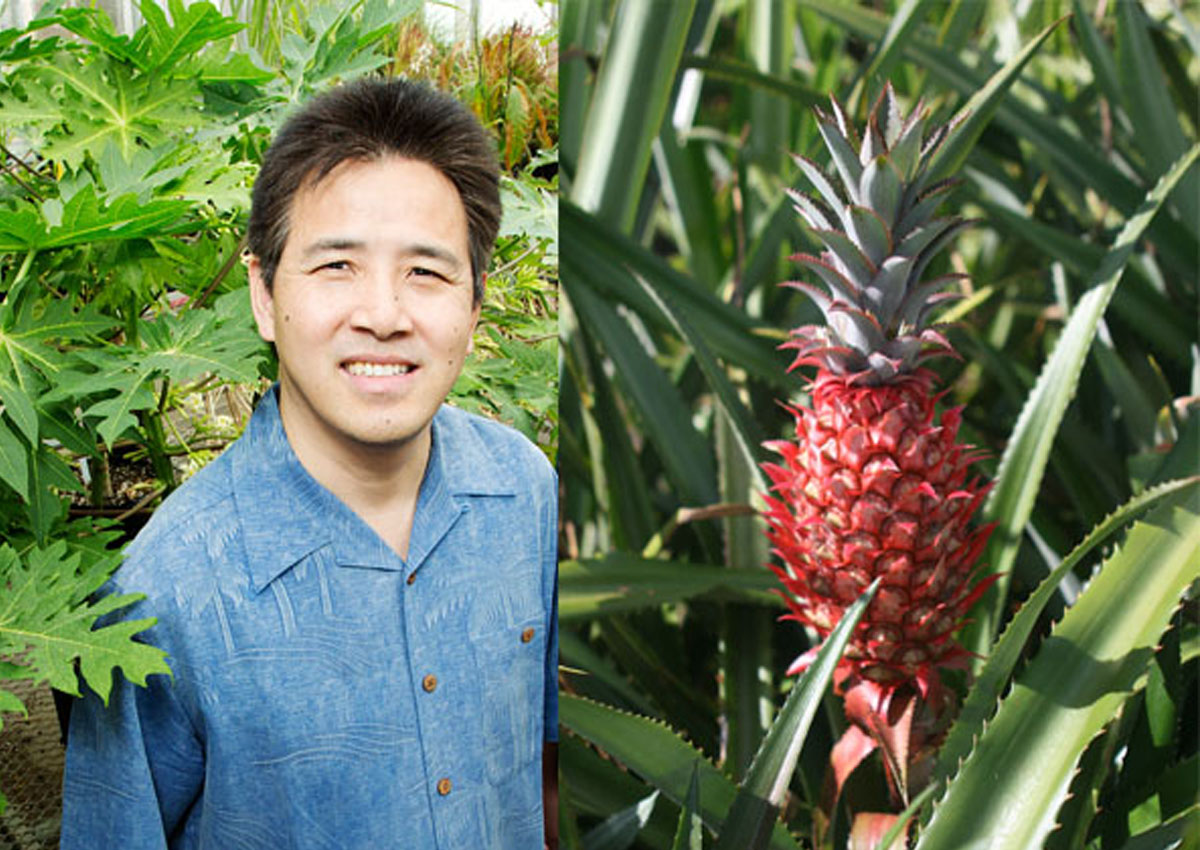
Genome Sequences Hint at Domestication of Pineapple
October 10, 2019| |
Researchers have now gained new insights on how human agriculture helped shape the evolution of pineapple. Led by University of Illinois Professor of Plant Biology Ray Ming, the international team of researchers published their analysis of the genome of the red pineapple, a plant grown for fiber production and as an ornamental, in Nature Genetics. The research team also examined new sequence data for other key pineapple cultivars grown for fruit, leading to new insights into the genetic responses of the plant to centuries of domestication and cultivation.
The study supports the hypothesis that domestication of crops that are propagated without using seeds, through cuttings or other means, can be domesticated in a single step. Ming and his team assembled the genome of red pineapple, Ananas comosus var. bracteatus, grown in gardens for decoration or to form a security hedge. Unlike other pineapple cultivars, this pineapple is able to self-pollinate.
The research group sequenced and assembled the red pineapple genome using the genome of previously sequenced fruit pineapple as a reference and comparator. They also re-sequenced the genomes of 89 pineapple accessions from multiple cultivars. They were able to trace how natural and artificial selection shaped key traits and established distinct varieties. The researchers hypothesized that for some cultivars, domestication was achieved in a single step rather than years of breeding. Comparison across genomes also revealed genes that support traits distinguishing different cultivars and yielded additional evidence for the involvement of certain genes in allowing or prohibiting self-pollination.
For more details, read the news article in the University of Illlinois website.
| |
You might also like:
- Scientists Develop Pineapple Genetic Map
- Pineapple Genome Unlocked; Gives Insight into Photosynthesis in Drought Tolerant Plants
- Protoplast Isolation Method for Genetic Improvement of Pineapple
Biotech Updates is a weekly newsletter of ISAAA, a not-for-profit organization. It is distributed for free to over 22,000 subscribers worldwide to inform them about the key developments in biosciences, especially in biotechnology. Your support will help us in our mission to feed the world with knowledge. You can help by donating as little as $10.
-
See more articles:
-
News from Around the World
- Engaging Editors Crucial for Improved Science Reporting in Kenya
- Genome Sequences Hint at Domestication of Pineapple
- Argentina Approves 60th GM Seed
- Pakistan Media, Other Stakeholders Briefed on Crop Technologies
- PH Biotech Community Zooms In on Regulation of Genome Edited Plants in the Country
- Researchers Crack Complete Genome of Soybean Rust Pathogen
-
Research Highlights
- Search for the Brown Planthopper Resistance Gene in Vietnamese Native Rice Varieties
- Scientists Engineer Plants to Make Infant-friendly Fat Molecules for Formula Milk
-
Plant
- Semi-dwarf Rice Developed by CRISPR-Cas9-directed Mutagenesis of OsGA20ox2
- CRISPR-Cas9 Reveals Role of OsPLDα1 in Phytic Acid Biosynthesis in Rice Grains
-
Read the latest: - Biotech Updates (November 12, 2025)
- Gene Editing Supplement (October 29, 2025)
- Gene Drive Supplement (February 22, 2023)
-
Subscribe to BU: - Share
- Tweet

